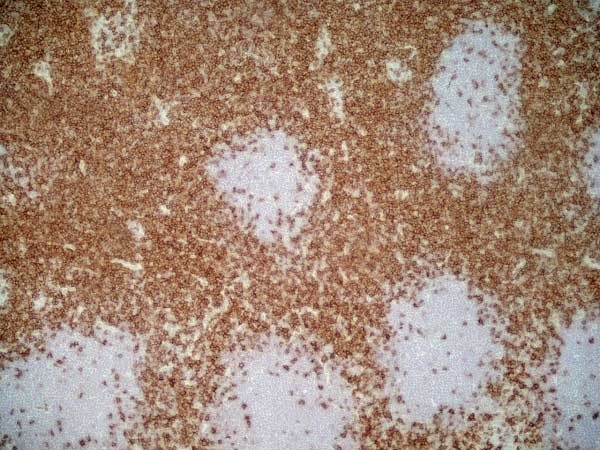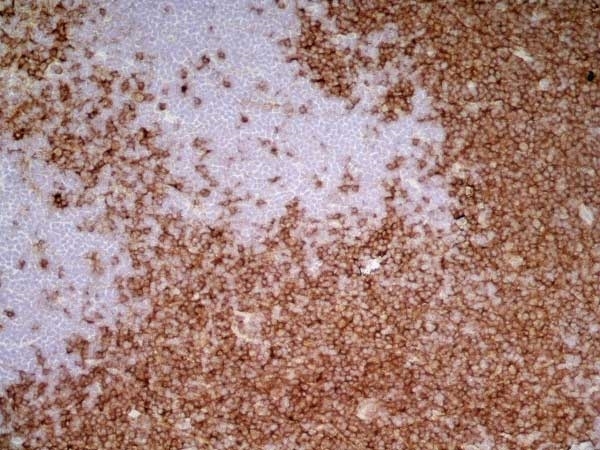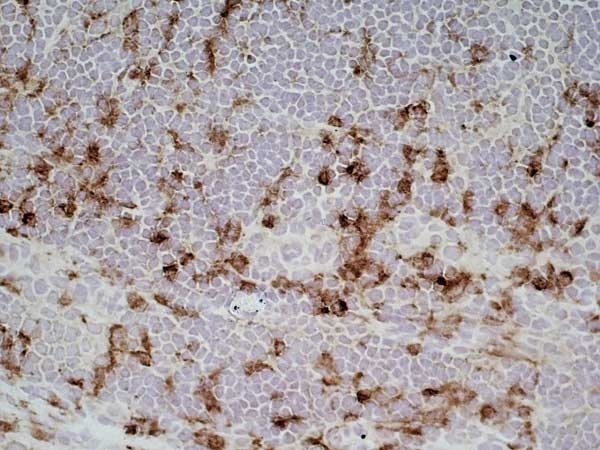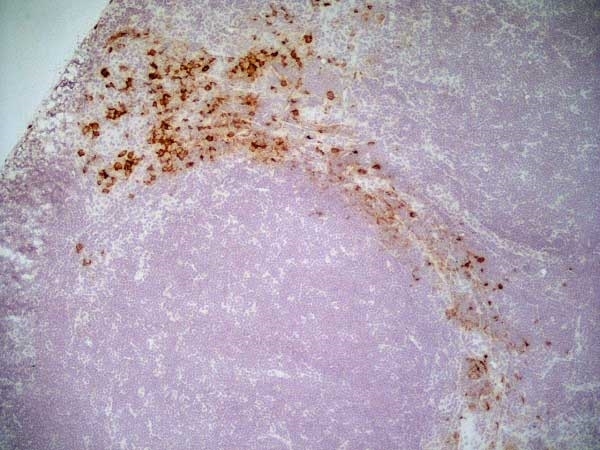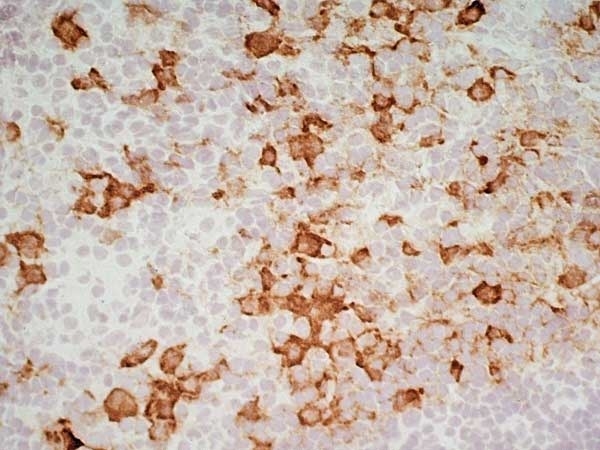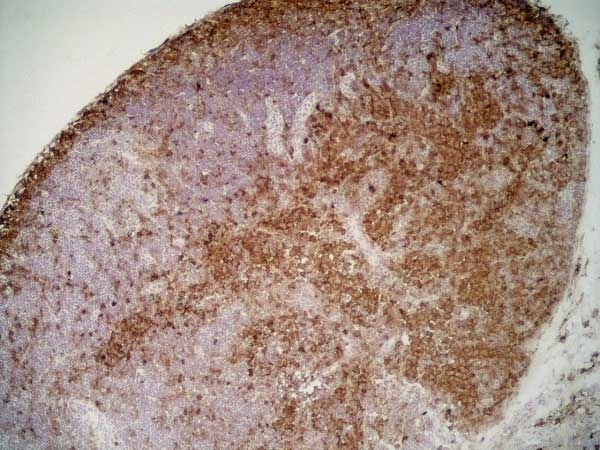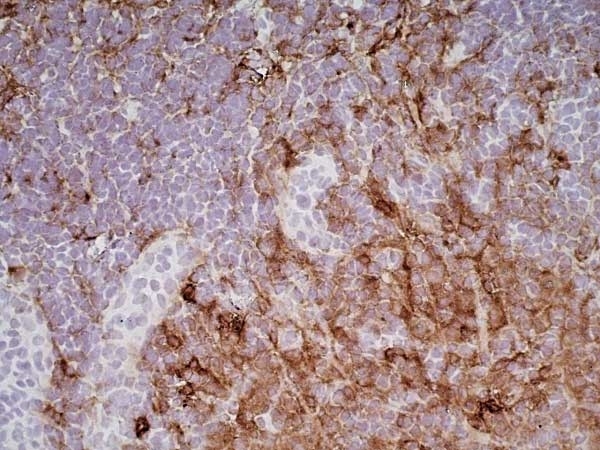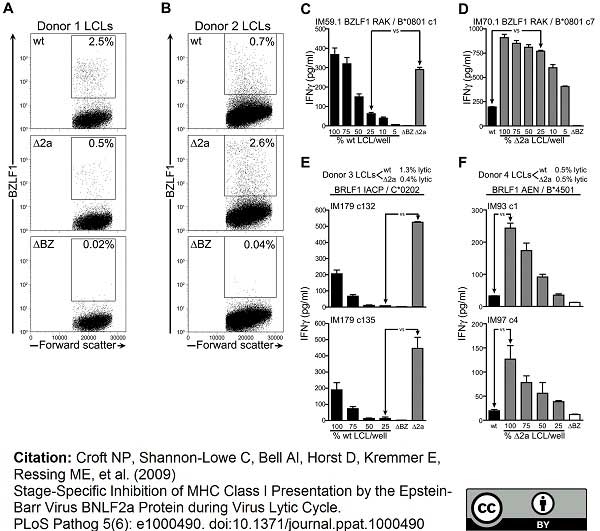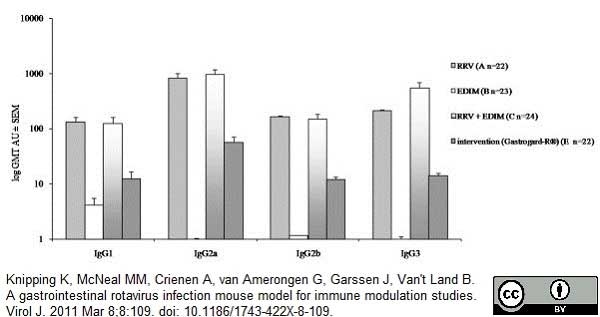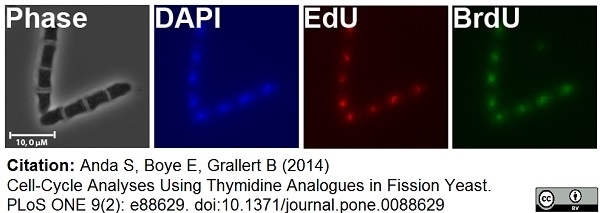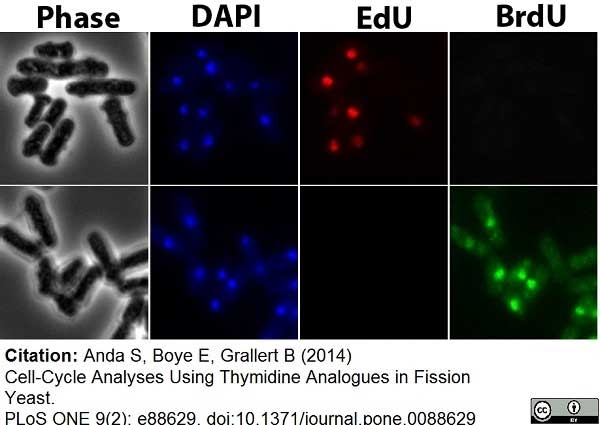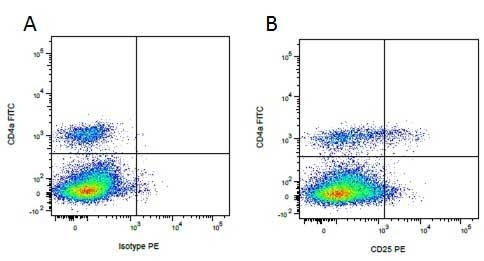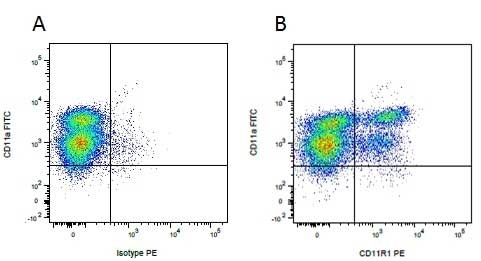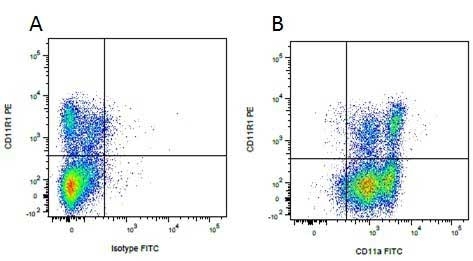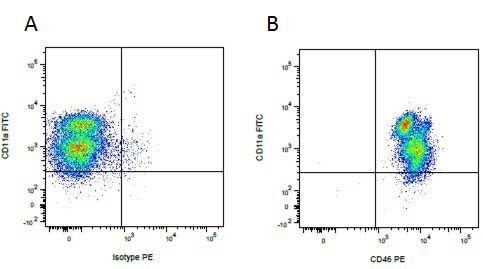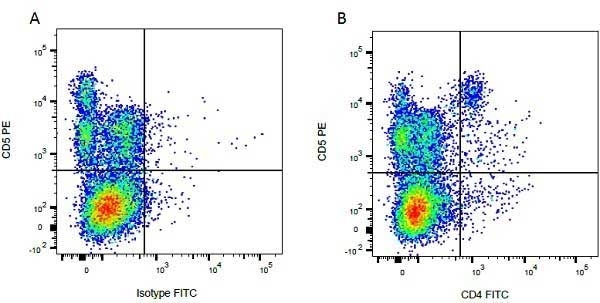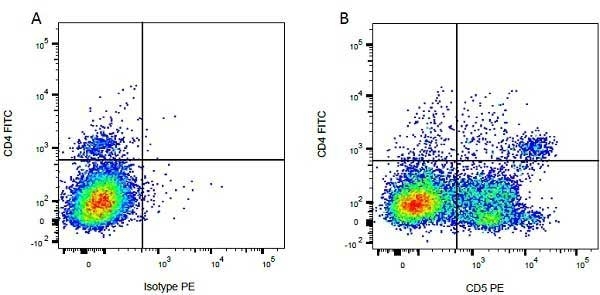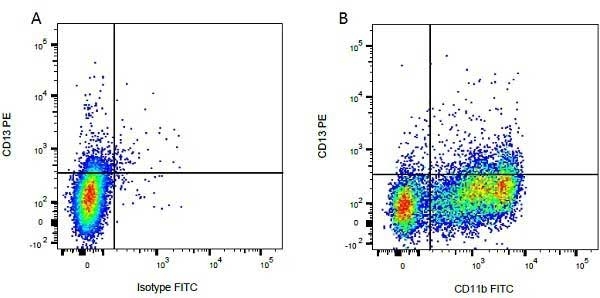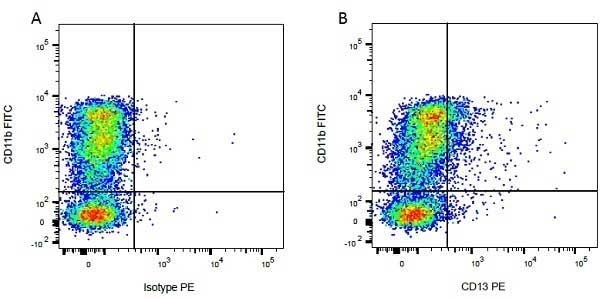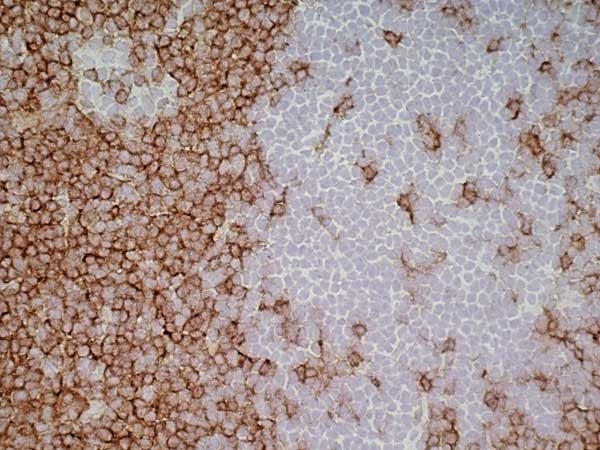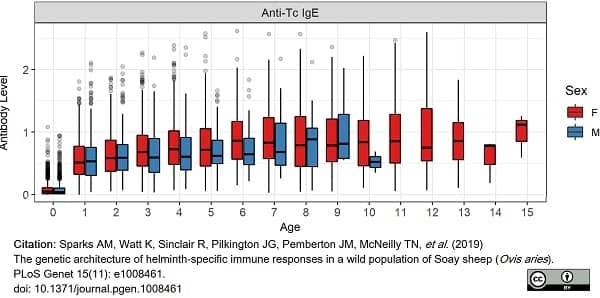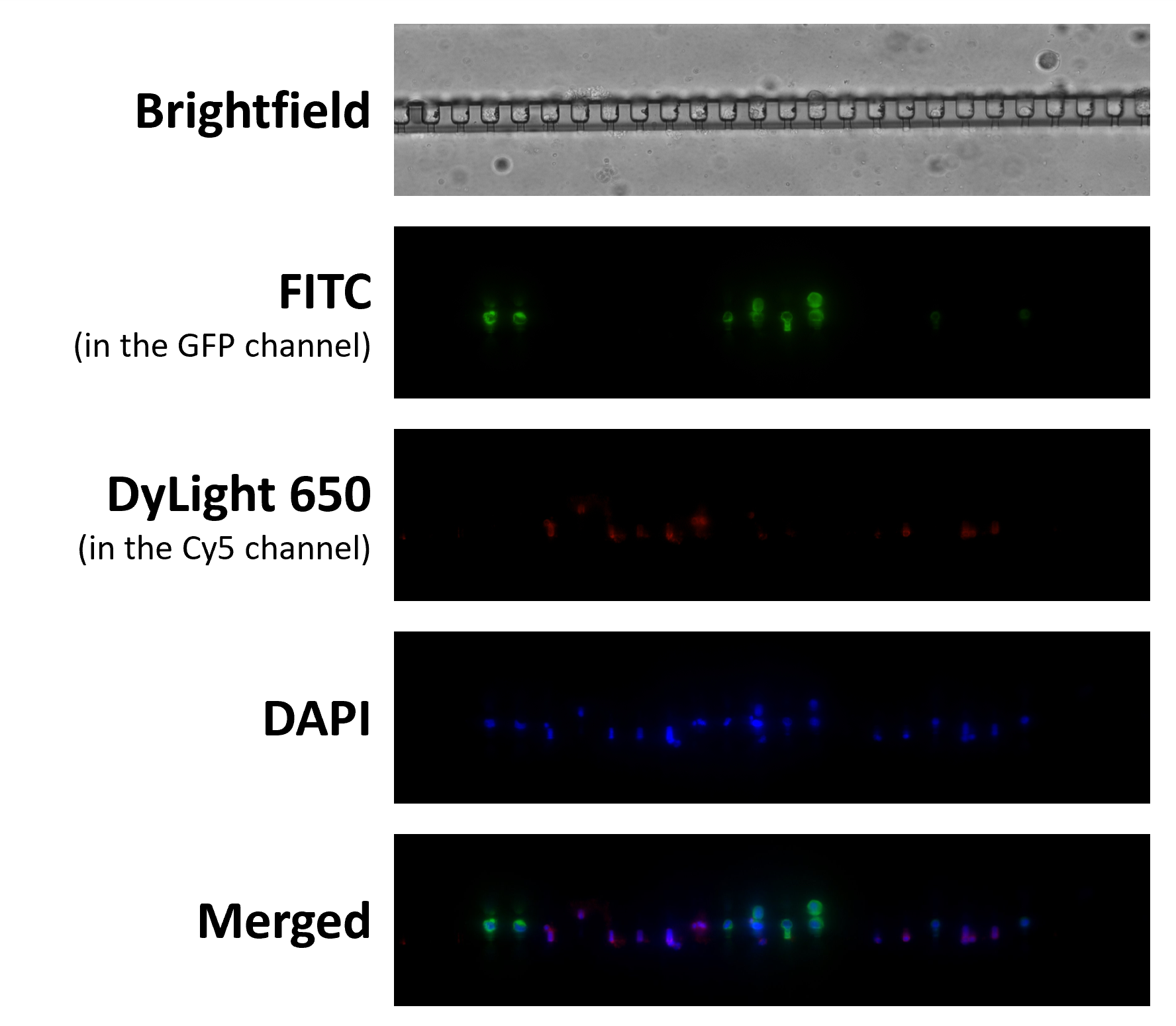IgG1 antibody

























Goat anti Mouse IgG1:RPE
- Product Type
- Polyclonal Antibody
- Isotype
- Polyclonal IgG
- Specificity
- IgG1
| Goat anti Mouse IgG1 antibody recognizes Mouse IgG1. This antibody has been cross absorbed against mouse IgM, IgG2a, IgG2b, IgG3 and IgA, pooled human sera and purified human paraproteins. Goat anti Mouse IgG1 antibody shows minimal cross-reactivity with human immunoglobulins. Goat anti Mouse IgG1 antibody has been validated for use on the Genesis Cell Isolation System with the CelSelect SlideTM technology. |
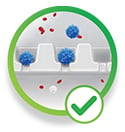
|
- Target Species
- Mouse
- Species Cross-Reactivity
-
Target Species Cross Reactivity Human - N.B. Antibody reactivity and working conditions may vary between species.
- Product Form
- Purified IgG conjugated to R. Phycoerythrin (RPE) - liquid
- Antiserum Preparation
- Antisera to mouse IgG1 were raised by repeated immunisation of goats with purified antigen. Purified IgG was prepared from whole serum by affinity chromatography.
- Buffer Solution
- Phosphate buffered saline
- Preservative Stabilisers
- <0.1% Sodium Azide (NaN3)
Stabilizing agent (sucrose) - Immunogen
- Mouse IgG1 paraproteins.
- Approx. Protein Concentrations
- IgG concentration 0.5 mg/ml
- Max Ex/Em
-
Fluorophore Excitation Max (nm) Emission Max (nm) RPE 488nm laser 496 578 - Regulatory
- For research purposes only
- Guarantee
- 6 months from date of despatch
DO NOT FREEZE
This product should be stored undiluted. This product is photosensitive and should be protected from light. Should this product contain a precipitate we recommend microcentrifugation before use.
| Application Name | Verified | Min Dilution | Max Dilution |
|---|---|---|---|
| Flow Cytometry | 1/500 |
- Flow Cytometry
- Use 10ul of the suggested working dilution to label 106 cells in 100ul
How to Use the Spectraviewer
Watch the Tool Tutorial Video ▸- Start by selecting the application you are interested in, with the option to select an instrument from the drop down menu or create a customized instrument
- Select the fluorophores or fluorescent proteins you want to include in your panel to check compatibility
- Select the lasers and filters you wish to include
- Select combined or multi-laser view to visualize the spectra
References for IgG1 antibody
-
Croft, N.P. et al. (2009) Stage-specific inhibition of MHC class I presentation by the Epstein-Barr virus BNLF2a protein during virus lytic cycle.
PLoS Pathog. 5(6): e1000490. -
Zuo, J. et al. (2011) The Epstein-Barr virus-encoded BILF1 protein modulates immune recognition of endogenously processed antigen by targeting MHC class I molecules trafficking on both the exocytic and endocytic pathways.
J Virol. 85: 1604-14. -
Knipping, K. et al. (2011) A gastrointestinal rotavirus infection mouse model for immune modulation studies.
Virol J. 8: 109. -
Young, D. et al. (2012) Soy-derived di- and tripeptides alleviate colon and ileum inflammation in pigs with dextran sodium sulfate-induced colitis.
J Nutr. 142 (2): 363-8. -
Bagai, U. and Pawar, A. (2013) A blood stage fraction of Plasmodium berghei induces protective and long lasting immune response in BALB/c mice.
Parasitol Int. 62: 329-36. -
Anda, S. et al. (2014) Cell-cycle analyses using thymidine analogues in fission yeast.
PLoS One. 9 (2): e88629. -
Kamat, M.M. et al. (2016) Changes in Myeloid Lineage Cells in the Uterus and Peripheral Blood of Dairy Heifers During Early Pregnancy.
Biol Reprod. 95 (3): 68. -
Ramanathan, R. et al. (2015) Transplantation of human stem cell-derived hepatocytes in an animal model of acute liver failure.
Surgery. 158 (2): 349-59.
View The Latest Product References
-
Hwang, S.R. et al. (2015) Altered expression levels of neurodevelopmental proteins in fetal brains of BTBR T+tf/J mice with autism-like behavioral characteristics.
J Toxicol Environ Health A. 78 (8): 516-23. -
Zhao, Z. et al. (2015) Multiple B-cell epitope vaccine induces a Staphylococcus enterotoxin B-specific IgG1 protective response against MRSA infection.
Sci Rep. 5: 12371. -
Gutiérrez-Miranda, B. et al. (2020) Oleacein Attenuates the Pathogenesis of Experimental Autoimmune Encephalomyelitis through Both Antioxidant and Anti-Inflammatory Effects.
Antioxidants (Basel). 9 (11): 1161. -
Gutierrez, B. et al. (2020) Oleanolic acid ameliorates intestinal alterations associated with EAE.
J Neuroinflammation. 17 (1): 363. -
Apóstolo, N. et al. (2020) Synapse type-specific proteomic dissection identifies IgSF8 as a hippocampal CA3 microcircuit organizer.
Nat Commun. 11 (1): 5171. -
Zhuang, X. et al. (2020) CAR T cells targeting tumor endothelial marker CLEC14A inhibit tumor growth.
JCI Insight. 5 (19): e138808. -
Sparks, A.M. et al. (2018) Natural Selection on Antihelminth Antibodies in a Wild Mammal Population.
Am Nat. 192 (6): 745-760. -
Kushwaha, V. et al. (2019) Troponin 1 of human filarial parasite Brugia malayi.: cDNA cloning, expression, purification, and its immunoprophylactic potential.
Parasitol Res. 118 (6): 1849-63. -
Kim, Y.H. et al. (2019) Effects of ruminal pH on gene expression in the rumen epithelium, peripheral blood mononuclear cell subpopulations, and blood metabolites from Holstein calves during weaning transition.
J Vet Med Sci. 81 (6): 808-816. -
Jimbo, S. et al. (2019) Natural and inducible regulatory B cells are widely distributed in ovine lymphoid tissues.
Vet Immunol Immunopathol. 211: 44-48. -
Sparks, A.M. et al. (2019) The genetic architecture of helminth-specific immune responses in a wild population of Soay sheep (Ovis aries.).
PLoS Genet. 15 (11): e1008461. -
Nedumpun, T. et al. (2019) Negative Immunomodulatory Effects of Type 2 Porcine Reproductive and Respiratory Syndrome Virus-Induced Interleukin-1 Receptor Antagonist on Porcine Innate and Adaptive Immune Functions.
Front Immunol. 10: 579. -
Verma, R. et al. (2018) Leishmania donovani. molecules recognized by sera of filaria infected host facilitate filarial infection.
Parasitol Res. 117 (9): 2901-12. -
Gatkowska, J. et al. (2019) The Impact of the Antigenic Composition of Chimeric Proteins on Their Immunoprotective Activity against Chronic Toxoplasmosis in Mice.
Vaccines (Basel). 7(4):154. -
Han, H.J. et al. (2022) Metal arsenic mediated enhancement of type-2 immunity in brains with altered locomotive activities in mice with autism-like behavioral characteristics.
Toxicol Res. 38 (1): 27-33. -
Anda, S. et al. (2021) Cosegregation of asymmetric features during cell division.
Open Biol. 11 (8): 210116. -
Minaei, S. et al. (2018) Propranolol efficacy as a novel adjuvant for immunization against Toxoplasma gondii. tachyzoites.
Exp Parasitol. 194: 60-66. -
Ngoepe, T.A. et al. (2023) Th1 and Th2 epitopes of Cowdria polymorphic gene 1 of Ehrlichia ruminantium.
Onderstepoort J Vet Res. 90 (1): e1-e15. -
Jo, J. et al. (2023) Immunodysregulatory potentials of polyethylene or polytetrafluorethylene microplastics to mice subacutely exposed via intragastric intubation.
Toxicol Res. 39 (3): 419-27. -
Sessevmez, M. et al. (2023) Induction of humoral and cell-mediated immunity in mice by chitosan-curdlan composite nanoparticles administered intranasally and subcutaneously
J Drug Deliv Sci Technol. 86: 104704. -
Veisi, R. et al. (2024) Expression and purification of TolC as a recombinant protein vaccine against Shigella flexneri and evaluation of immunogenic response in mice.
Microb Pathog. : 106539 [Epub ahead of print] -
Faber, E. et al. (2024) Identification of T cell and linear B cell epitopes on African horse sickness virus serotype 4 proteins VP1-1, VP2, VP4, VP7 and NS3.
Vaccine. 42 (2): 136-145. -
Pretorius, A. et al. (2024) Screening for immune biomarkers associated with infection or protection against Ehrlichia ruminantium by RNA-sequencing analysis.
Microb Pathog. : 106588. -
Kusma, S. et al. (2024) Oral subacute polypropylene microplastics administration effect on potential immunotoxicity in ICR mice.
J Toxicol Environ Health A. : 1-10 [Epub ahead of print].
- RRID
- AB_1102649
- UniProt
- P01869
- P01868
- Entrez Gene
- Ighg1
- Ighg1
- GO Terms
- GO:0001788 antibody-dependent cellular cytotoxicity
- GO:0001798 positive regulation of type IIa hypersensitivity
- GO:0001812 positive regulation of type I hypersensitivity
- GO:0003823 antigen binding
- GO:0006910 phagocytosis, recognition
- GO:0006911 phagocytosis, engulfment
- GO:0006958 complement activation, classical pathway
- GO:0019731 antibacterial humoral response
- GO:0042571 immunoglobulin complex, circulating
- View More GO Terms
- GO:0050766 positive regulation of phagocytosis
- GO:0005886 plasma membrane
- GO:0016021 integral to membrane
STAR132PE
If you cannot find the batch/lot you are looking for please contact our technical support team for assistance.
Please Note: All Products are "FOR RESEARCH PURPOSES ONLY"
View all Anti-Mouse ProductsAlways be the first to know.
When we launch new products and resources to help you achieve more in the lab.
Yes, sign me up